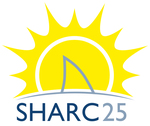Work performed from the beginning of the project to the end of the 1st reporting period covered by the report and main results achieved:
During the 1st reporting period (May 2015 – October 2016) high-efficiency Cu(In,Ga)Se2 (CIGS) thin-film solar cells (with efficiency equal to or above 20%) were sent out by Empa and ZSW to the consortium for in-depth material and device characterization. In addition, input data on material properties for device simulations and density functional theory modelling were determined and provided to the consortium. With the introduction of additional alkali elements in the post-deposition-treatment of CIGS absorbers, a step forward to even higher efficiencies was already achieved during the first 16 months of the project. Combined with optimized surface treatments developed in the project a CIGS solar cell with an efficiency of 22.6% was obtained.
Furthermore, promising methods for realizing front and back passivation of the CIGS absorber layer were developed and analyzed. Multidimensional device simulation proved to be very valuable to predict the optimum geometry of openings for point contacts in such passivation layers.
The optical properties of all functional layers in device quality were analyzed in detail to complete the required data set for accurate device simulation. This approach allowed detailed optical loss analysis of the record devices and provides guidance on how to increase the current density.
First activities to implement the combination of all findings started on cell as well as on mini-module level, and all technical results and methods applied are continuously assessed in view of industrial implementation by the industrial partners.
Progress beyond the state of the art and expected potential impact
The most obvious progress beyond state of the art is achieved in the device performance: With the demonstration of a solar cell with an efficiency of 22.6% (with anti-reflective coating) a major step towards the main project objective of 24% cell efficiency was reached. Very important for future improvements of the performance as well as expected impact on the costs is the progress achieved on understanding. The Sharc25 project enabled the following technical progress beyond state of the art:
- Complete data set of optical properties of all functional layers in device quality
- Multidimensional numerical model for record-efficiency solar cells
- Simulation-based guidelines for improving the CIGS/buffer interface
- Simulation-based guidelines for optimized point contact size in passivation layers
- Information on chemical distribution of elements in the bulk of high quality absorber layers
- Method for measuring potential and band gap fluctuation in the bulk of high quality absorber layers
- Information on carrier recombination in the bulk of high quality absorber layers
- Formation energies of alkali-based doping defects in CIGS with different composition
- Detailed know-how on optical losses in the different layers of the device
Currently the consortium is developing optimized fabrication process based on the findings described above with the objective to reach efficiencies of 24% or more. Novel device concepts and processes will be developed to overcome major recombination losses, e.g.: increasing carrier life time, active carrier collection, increasing absorber energy bandgap and adapting energy bandgap grading to reduce the impact of potential fluctuations. Novel approaches for light management will be applied to increase the optical path length in the CIGS absorber and combine novel emitter, front contact, and anti-reflection concepts for higher photon injection into the absorber layer.
The novel device architecture and processing concepts developed in Sharc25 will provide the decisive advantage to the European PV industry to realize maximized CIGS module performance with optimized thin-film production processes and PV technology. Without this significant technological progress the sustainable development of European PV industry is at high risk. Not only will the module manufacturers benefit from this technology head start but also many branches of industry along the value chain of CIGS solar modules and PV systems. Furthermore, the targeted performance improvement in Sharc25 and resulting significant cost reductions will lead to many new business concepts for implementing low-cost, high performance energy conversion solutions in existing or new products.

